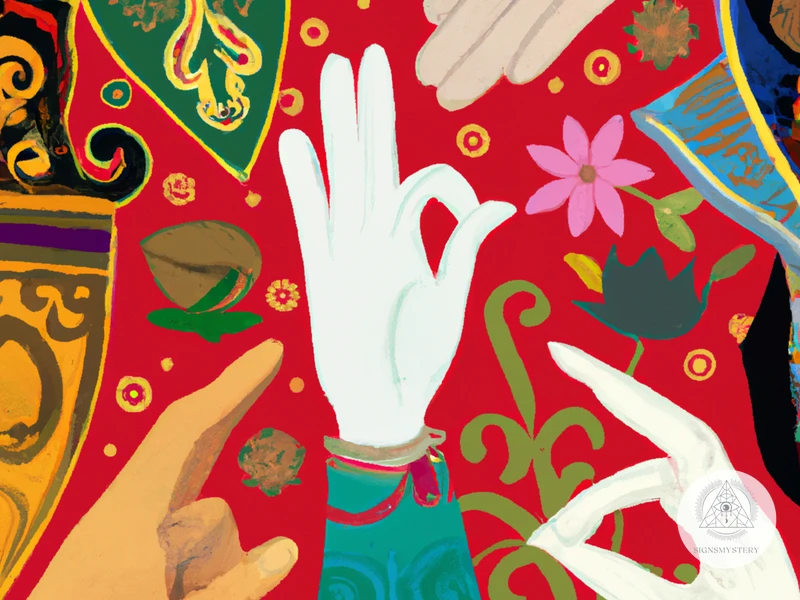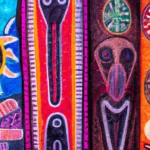Tarot practice is a deeply personal and spiritual experience. As such, it encompasses a wide range of cultural symbols and traditions that have evolved over centuries. However, understanding and respecting cultural boundaries is crucial for tarot readers, as every symbol carries unique meaning and significance that cannot be dismissed or misinterpreted. This article aims to guide readers through the complex web of cultural influences in tarot, exploring how to approach these symbols with respect and sensitivity. By delving into the nuances of cultural appropriation versus appreciation, identifying cultural symbols, and outlining ways to respectfully engage with these elements, we hope to create a more inclusive and mindful practice that honors and celebrates diverse traditions.
The Importance of Cultural Boundaries

It is essential to acknowledge and respect cultural boundaries in tarot practice. Failing to do so can lead to cultural appropriation, which disregards the historical and symbolic significance of cultural practices. In contrast, paying homage to diverse cultures through appreciation and collaboration can enhance our understanding and interpretation of the tarot. It is crucial to approach cultural symbols with care and consideration while also recognizing the need for research and education on their appropriation. Additionally, being mindful of our intentions can help us avoid inappropriate questions and behaviors that could harm our querents and dishonor cultural histories. By honoring cultural boundaries, we can create an ethical and sensitive environment for tarot readings that respects all individuals and their backgrounds.
Appropriation vs. Appreciation
One of the most significant issues in Tarot practice is the cultural appropriation of symbols and practices. Appropriation refers to the unauthorized use of cultural artifacts by individuals who are outside that culture, without understanding or respecting the significance behind it. In contrast, appreciation means acknowledging and respectfully using cultural symbols and practices with the consent and approval of the originating culture.
Tarot is a practice that draws on various cultures, and it’s crucial to understand where each symbol comes from and whether it’s appropriate to use it in your readings. One way to avoid appropriation is by being mindful of the difference between inspiration and appropriation.
As a Tarot reader, it’s essential to ask yourself whether you’re using cultural symbols respectfully or exploiting them for personal gain. One way to avoid appropriation is to understand the cultural context behind symbols and practices, and acknowledge the originating culture. Additionally, it is essential to seek consent from members of that culture and to avoid using sacred cultural practices outside their intended uses.
In the table below, we have summarized the differences between appropriation and appreciation:
| Appropriation | Appreciation |
|---|---|
| Unauthorized use | Respectful use with approval and consent |
| Exploits cultural symbols for personal gain | Acknowledges cultural significance |
| Uses cultural practices without understanding or respect | Understands and respects the cultural significance of practices |
| Does not seek consent or input from originating culture | Seeks consent or input from members of the originating culture |
As you can see, understanding the difference between appropriation and appreciation is vital when using cultural symbols in Tarot. By respecting cultural boundaries, you can avoid harming the individuals and communities the symbols originate from and ensure your Tarot practice is ethical and respectful.
If you want to learn more about Tarot boundaries, check out our article on Tarot Boundaries: Understanding and Respecting Boundaries in Tarot Practice.
How to Identify Cultural Symbols in Tarot
Identifying cultural symbols in tarot is an essential aspect of tarot practice. It enables tarot practitioners to determine the source of the symbols and their meanings. Understanding cultural symbols in tarot also promotes cultural sensitivity and respects cultural boundaries.
To identify cultural symbols in tarot, it is essential to research and study diverse cultures and their symbols. Tarot practitioners can read books, attend cultural events, and connect with people from different cultures to gain more knowledge about their unique symbols.
It is also important to analyze the imagery in the tarot cards. For example, if a card depicts a figure wearing traditional clothing, it is essential to understand the cultural significance of the attire. Similarly, if a card shows an object such as a musical instrument or a piece of jewelry, it’s important to learn the cultural connotations behind it.
Tarot practitioners must be careful not to stereotype cultures by oversimplifying their symbols. Instead, they must approach cultural symbolism in tarot with an open mind and a willingness to learn.
Identifying cultural symbols in tarot requires tarot practitioners to research, analyze, and understand different cultural symbols. By doing so, they can promote cultural sensitivity and respect cultural boundaries in their tarot practice.
Ways to Respect Cultural Boundaries
Respecting cultural boundaries is an integral part of practicing tarot, as it allows us to honor and acknowledge the diversity and significance of various cultures. Research and education are crucial in understanding the cultural symbols and references used in tarot decks. Learning about the history and traditions behind each symbol can help avoid cultural appropriation and ensure respectful usage. Additionally, collaboration and representation can be powerful tools in creating culturally inclusive tarot decks and readings. It’s important to be mindful of your own intentions and biases, and to approach cultural symbols with sensitivity and respect. By prioritizing cultural boundaries in our tarot practice, we can create a more ethical and meaningful experience for ourselves and those around us. For more information on setting boundaries in tarot, check out our article on Tarot Boundaries and Spreads.
Research and Education
One of the most important steps towards respecting cultural boundaries in tarot practice is through research and education. It is crucial to understand the historical and cultural significance of the symbols and imagery used in tarot decks to avoid appropriating or disrespecting them. Research can be done through various channels such as books, articles, and online resources. Education can also come from attending workshops, conferences, or classes on cultural awareness and sensitivity.
To start the research and education process, tarot practitioners should first examine the deck they are working with. They should try to identify symbols that have cultural and historical significance, and research their origins and meanings. This will enable them to use these symbols in a respectful and appropriate manner. For instance, if a tarot practitioner is using the tarot of the Golden Dawn deck, they may want to do some research on the ancient Egyptian religion and mythology, as this deck draws heavily from it.
Another way to expand one’s cultural awareness is to read books or articles written by people from diverse cultural backgrounds. This allows practitioners to gain a better understanding of different cultures and the significance of certain symbols. An article about the importance of consent in tarot readings would be a great example of a resource that emphasizes a respect for boundaries and can expand one’s awareness of ethical tarot practices.
Research and education are essential in promoting cultural sensitivity and respect in tarot practice. By taking the time to understand the cultural significance of the symbols and imagery used in tarot, practitioners can ensure that they are not appropriating or disrespecting cultures, but rather honoring and appreciating them.
Collaboration and Representation
Collaborating with individuals from the culture represented in the Tarot deck can be an excellent way to create a respectful and accurate depiction of their traditions. Representation matters, and there is no better way to ensure that a culture is accurately and respectfully depicted than by working with individuals from that community.
It is essential to compensate these individuals fairly for their expertise and time. Tokenism and exploitation are unfortunately common practices that further marginalize individuals from underrepresented communities. Collaborating with experts from marginalized communities should not only be reserved for the creation of the deck but also for any marketing or promotional materials supporting it.
Another way to ensure respectful representation is to buy decks from diverse creators and support their work. This not only helps to uplift underrepresented voices in the Tarot community but also ensures that diverse and respectful representation becomes the norm. It is crucial to remember that Tarot is a tool of self-reflection, and diverse representation will allow a broader range of individuals to engage with it and see themselves reflected in the symbolism.
Finally, it is crucial to examine our intentions when using Tarot cards. Are we seeking to understand and appreciate the wisdom of other cultures, or are we merely using it as a trendy accessory for personal gain? By reflecting on our intentions, we can ensure that we are using the Tarot appropriately and honoring the culture’s traditions that inspired it.
Internal link: If you are interested in learning more about ethical considerations in Tarot readings, check out our article on Ethical Tarot Readings With Friends And Family.
Being Mindful of Your Intentions
When it comes to respecting cultural boundaries in tarot practice, it’s essential to be mindful of your intentions. This means taking a deep and honest look at why you’re drawn to a particular cultural tradition or symbol in the first place. Is it because you genuinely appreciate and respect the culture, or is it a mere trendy aesthetic that you want to capitalize on? It’s crucial to remember that cultures aren’t costumes or props to appropriate for personal gain.
Before incorporating any cultural symbols or practices into your tarot practice, take some time to consider the historical, spiritual, and cultural significance behind them. Ensure that you’re using them respectfully and appropriately and not perpetuating harmful stereotypes or cultural insensitivity. Cultural symbols have deep roots and meaning in the cultures that created them, and it’s essential to honor and respect that.
To demonstrate your good intentions, consider connecting with members of the culture you’re incorporating into your tarot practice. Collaborating with and learning from individuals who come from a particular cultural background can deepen your understanding of their practices and their meanings. It can also create a more accurate depiction of the culture and its people within your tarot practice.
Being mindful of your intentions is an ongoing process in your tarot practice. Take time to reflect on your motivations and be open to feedback from others, especially those who are from the cultures you’re learning about. If you find that you’ve unintentionally used a cultural symbol inappropriately, it’s essential to apologize and take steps to correct your mistake.
Ultimately, being mindful of your intentions is a key step in respecting cultural boundaries in tarot practice and avoiding cultural appropriation. By approaching your tarot practice with a deep sense of respect and appreciation for the cultures you’re learning from, you can build meaningful connections with your tarot readings while creating a culture of inclusivity and sensitivity.
Internal link: Tarot Sensitivity
Examples of Cultural Symbols in Tarot
Many tarot decks incorporate cultural symbols from various traditions around the world. It’s important to recognize and respect the origins and meanings of these symbols. The Japanese-inspired Anime Tarot Deck utilizes colorful images and popular anime characters to reflect traditional Japanese symbolism. Meanwhile, The Indigenous Wisdom Oracle Deck celebrates Native American culture and spirituality with imagery of animals, nature, and traditional tools such as feathers and drums. On the other hand, The Egyptian-Influenced Tarot of the Golden Dawn draws inspiration from ancient Egyptian mythology and hieroglyphs. It’s crucial to understand the cultural significance of each symbol and use them in an appropriate and respectful manner in tarot readings. It’s also important to respect cultural boundaries and ask for consent before using symbols from a culture that is not one’s own. For more information on the importance of
Subscribe to Our Newsletter
Sign up to receive the latest news and updates.
The Japanese-Inspired Anime Tarot Deck
The Japanese-Inspired Anime Tarot Deck showcases the fusion of traditional tarot card meanings with Japanese pop culture aesthetics. Tarot enthusiasts appreciate the unique and intricate design of the deck, which features popular anime characters in place of traditional tarot figures. In this deck, The Fool is reimagined as a young adventurer, The Magician takes the form of a powerful mage, and The High Priestess becomes a graceful maiden, reminiscent of elegant anime characters often seen in Japanese culture.
While the deck has garnered popularity among anime and tarot enthusiasts, some have expressed concern about cultural appropriation. It is important to note that while the deck features Japanese-inspired aesthetics, it is not a true representation of Japanese culture or tarot practice in Japan. It is crucial to approach the deck with an appreciation for the art form rather than appropriating Japanese culture.
To respect cultural boundaries, it is recommended to approach the deck with an open mind and a willingness to learn about Japanese culture. Engaging in research and education about the culture behind the deck can deepen your understanding and respect for the art form. Additionally, it is essential to collaborate and incorporate representation of the culture in respectful ways. The Japanese-Inspired Anime Tarot Deck is a captivating and unique representation of tarot that highlights the beauty of Japanese pop culture and should be appreciated with respect and cultural sensitivity.
The Indigenous Wisdom Oracle Deck
The Indigenous Wisdom Oracle Deck is a tarot deck that draws upon the wisdom and cultural traditions of indigenous peoples from around the world. This deck is a powerful tool for connecting with the natural world and gaining insight into different perspectives and ways of living.
Some of the key symbols and themes present in this deck include:
- Animals: Many indigenous cultures view animals as sacred and imbued with spiritual significance. The Indigenous Wisdom Oracle Deck features a range of animal symbols, from the eagle to the wolf to the snake, each with its own unique meaning.
- Nature: The natural world plays a central role in many indigenous traditions, and this is reflected in the Indigenous Wisdom Oracle Deck. Images of trees, flowers, and other natural phenomena are used to convey important ideas and messages.
- Sacred Objects: From drums to masks to medicine bags, the Indigenous Wisdom Oracle Deck features a range of sacred objects that hold deep meaning in various indigenous cultures.
- Themes of Community: Many indigenous cultures place a strong emphasis on community and collaboration. The Indigenous Wisdom Oracle Deck features symbols of groups of people working together, as well as images of individuals in relation to their families and broader social networks.
It is important to use the Indigenous Wisdom Oracle Deck with respect and care, and to honor the cultures from which it draws its inspiration. By engaging with these symbols and ideas in a mindful way, you can gain a deeper understanding of these rich cultural traditions and the perspectives they offer.
The Egyptian-Influenced Tarot of the Golden Dawn
The Egyptian-Influenced Tarot of the Golden Dawn is a popular tarot deck that draws heavily on the mythology and symbolism of ancient Egypt. This deck was first created in the early 20th century by members of the Hermetic Order of the Golden Dawn, a secret society that sought to explore the connection between ancient wisdom and spiritual enlightenment.
The Golden Dawn Tarot deck features images of Egyptian gods and goddesses, as well as scenes from Egyptian mythology. Some of the most prominent cards in the deck include:
| The Empress | The Empress card in the Golden Dawn Tarot is often depicted as the goddess Isis. Isis was one of the most important figures in the Egyptian pantheon, and was associated with motherhood, fertility, and the cycle of life and death. |
|---|---|
| The Magician | The Magician in the Golden Dawn Tarot is often depicted as the god Thoth. Thoth was the god of wisdom, magic, and learning, and was often depicted as a baboon or an ibis. |
| The High Priestess | The High Priestess in the Golden Dawn Tarot is often depicted as the goddess Ma’at. Ma’at was the goddess of truth and justice, and was often associated with the balance between order and chaos. |
| The World | The World card in the Golden Dawn Tarot is often depicted as the goddess Nut. Nut was the sky goddess, and was often depicted as a woman arching over the earth. |
While the Golden Dawn Tarot deck draws heavily on Egyptian symbolism, it is important to remember the cultural boundaries that should be respected. It is crucial for tarot readers to educate themselves about the cultural significance of the symbols they are using, and to avoid appropriating or misusing them. By honoring the cultural roots of the Golden Dawn Tarot and other tarot decks, we can ensure that our practices are respectful and authentic.
Conclusion
As tarot readers, it is essential that we understand and respect cultural boundaries in our practice. Through research and education, we can identify cultural symbols in the tarot and collaborate with members of those cultures to ensure representation and respect. Appropriation should be avoided, and appreciation should be the aim.
We must also be mindful of our intentions when using cultural symbols in our tarot practice. Are we using them for personal gain, or are we honoring the culture and its traditions?
Examples of cultural symbols in tarot can be found in decks such as the Japanese-inspired Anime Tarot Deck, the Indigenous Wisdom Oracle Deck, and the Egyptian-influenced Tarot of the Golden Dawn. These decks serve as examples of how cultural symbols can be respectfully incorporated into tarot without appropriating or disrespecting the culture they are drawn from.
In conclusion, as tarot practitioners, we must strive to understand and respect cultural boundaries. Through education, collaboration, and mindfulness, we can create a more inclusive and respectful tarot community that honors all cultural traditions represented in the tarot. Let us honor and appreciate the diverse cultural symbolism found in the tarot, while also being respectful of the cultural boundaries from which they originate.
Frequently Asked Questions
What is cultural appropriation in tarot practice?
Cultural appropriation occurs when someone from one culture takes and uses symbols, practices, or ideas from another culture without the proper understanding or acknowledgement of their origins or significance.
Why is it important to respect cultural boundaries in tarot?
Respecting cultural boundaries in tarot practice ensures the integrity and authenticity of cultural symbols and practices, and acknowledges the lived experiences and histories of the cultures they come from.
What is the difference between appropriation and appreciation?
Appropriation is taking cultural symbols, practices, or ideas without understanding or respecting their significance or origins, while appreciation is respectfully engaging with and acknowledging the cultural significance of those symbols, practices, or ideas.
How can I identify cultural symbols in tarot?
Researching and understanding the cultures from which the symbols originate is key to identifying cultural symbols in tarot, as well as seeking out resources and experts in those cultures.
What are some ways to respect cultural boundaries in tarot practice?
Ways to respect cultural boundaries in tarot practice include researching and educating oneself on the cultures from which symbols originate, collaborating with and representing those cultures in a respectful and equitable way, and being mindful of one’s intentions when using cultural symbols in tarot practice.
What is the benefit of collaborating with and representing cultures in tarot practice?
Collaborating with and representing cultures in tarot practice ensures that the cultures are given proper respect and acknowledgement for their contributions and significance, and helps to prevent misinterpretation or misuse of cultural symbols.
What should I do if I am unsure about the cultural significance of a tarot symbol?
It is best to research and ask experts in the culture from which the symbol originates in order to properly understand and respect its significance.
Can cultural symbols be used in tarot if I have no connection to that culture?
Cultural symbols can be used in tarot practice if they are used in a respectful and appropriate way that acknowledges and respects their cultural significance and history.
How can being mindful of my intentions help to respect cultural boundaries in tarot practice?
Being mindful of one’s intentions when using cultural symbols in tarot practice helps to ensure that they are being used in a respectful and appropriate way that acknowledges and respects their cultural significance and history.
What is an example of a culturally-inspired tarot deck?
The Indigenous Wisdom Oracle Deck, which features symbols and practices from various Indigenous cultures, is an example of a culturally-inspired tarot deck that respectfully acknowledges and represents the cultures from which its symbols originate.










